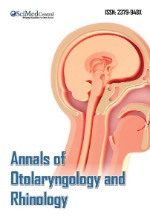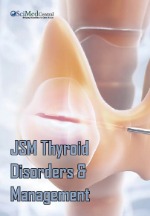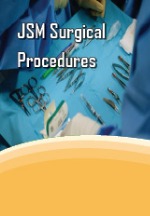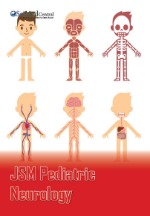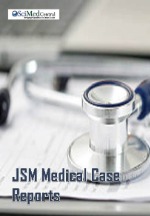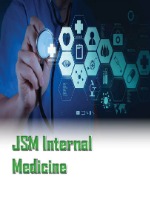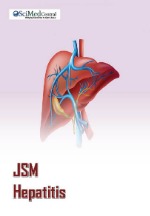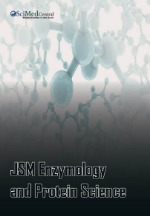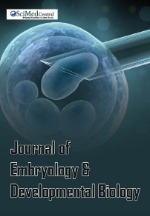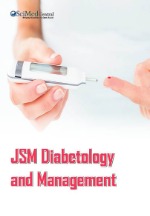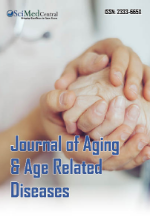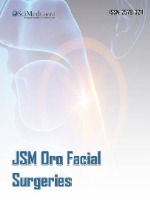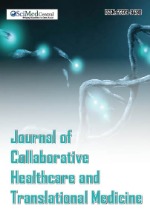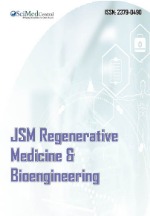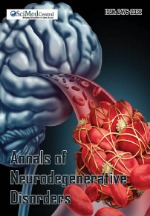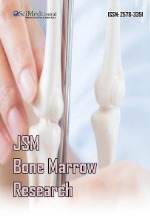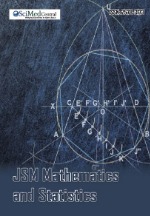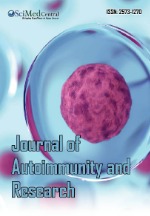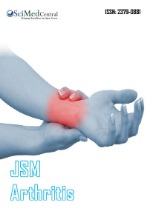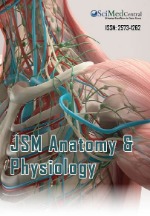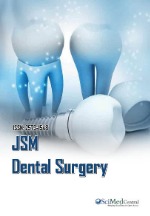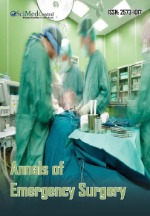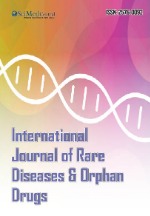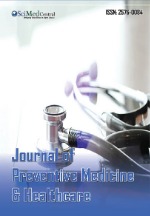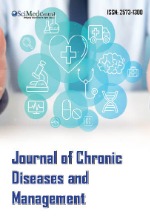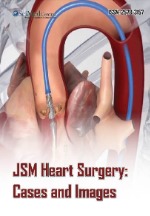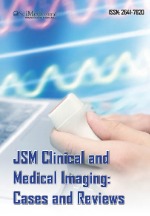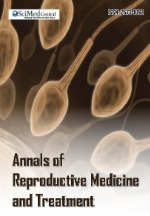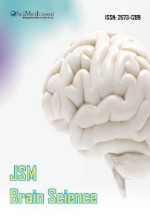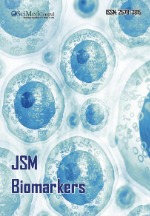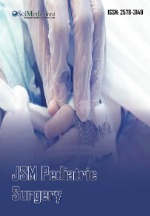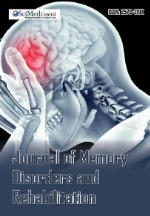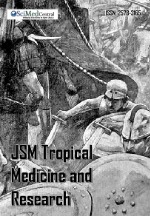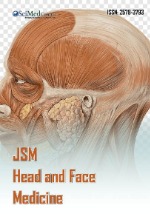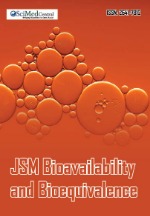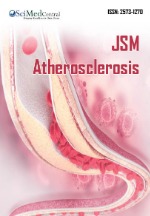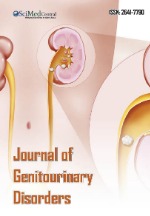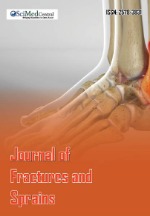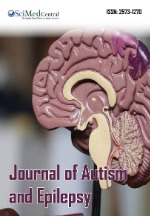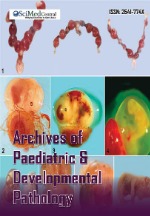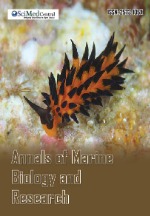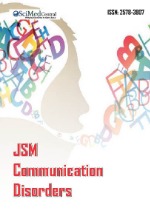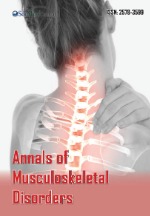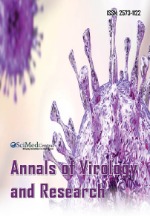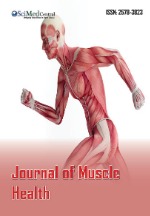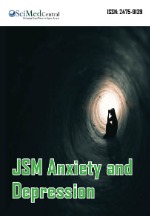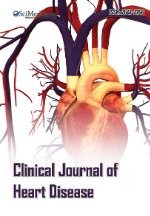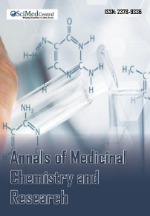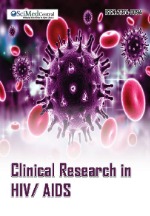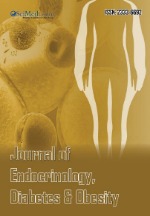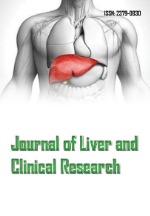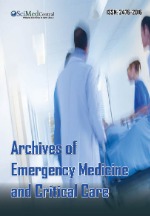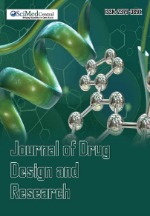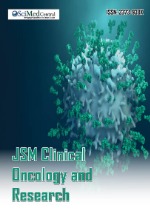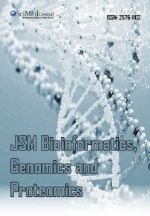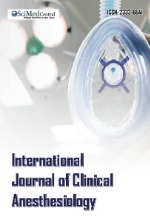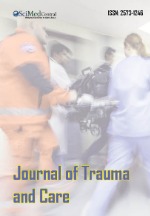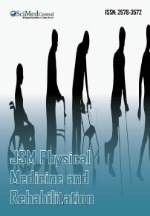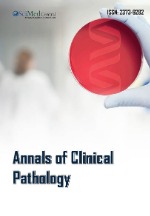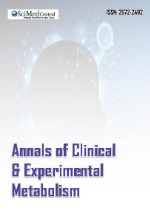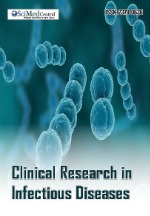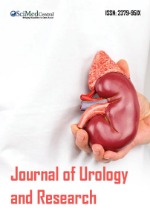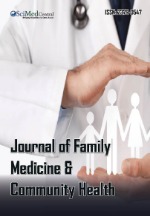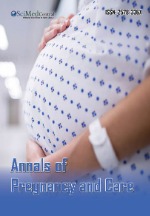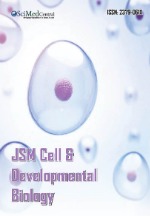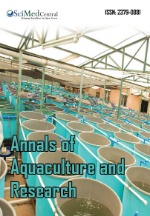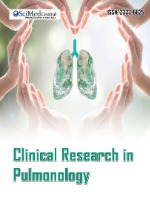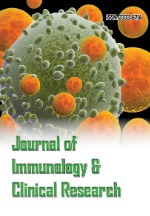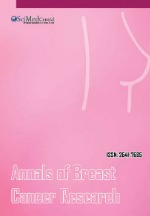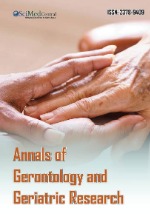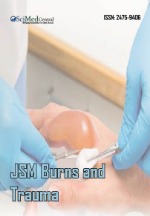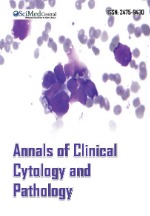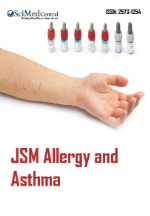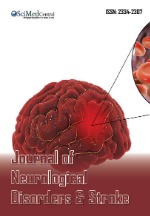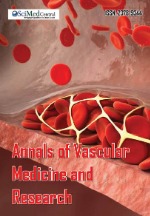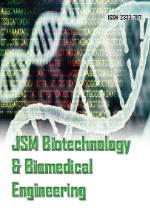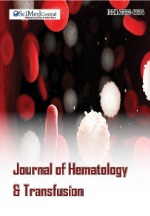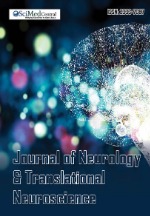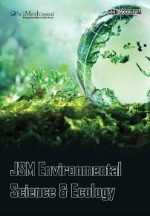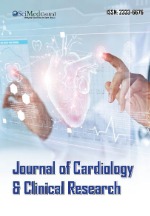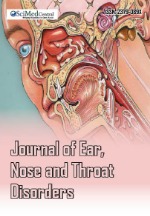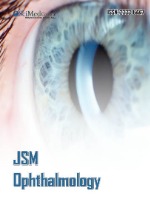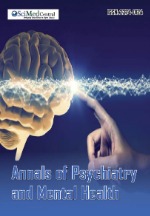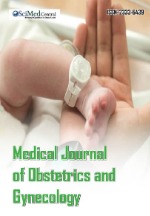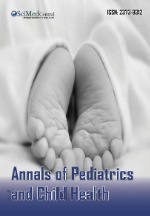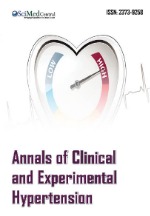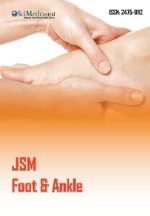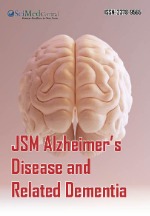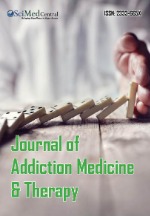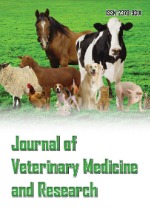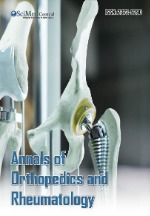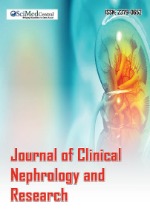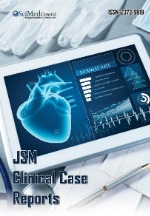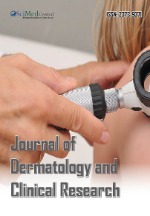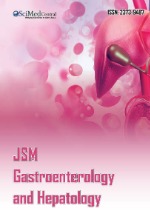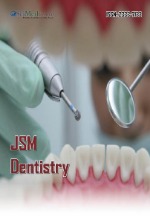A Preliminary Study to Assess Awareness about Non Alcoholic Fatty Liver Disease (NAFLD) and Hypertension
- 1. Department of Community Health Nursing, College of Nursing, Madras Medical College, India
- 2. College of Nursing, Madras Medical College, India
- 3. Anna Medical College, Mauritius
- 4. Dhanabalan Srinivasan Medical College and Hospital, India.
Abstract
Non Alcoholic Fatty Liver Disease (NAFLD) is global public health problem. NAFLD is considered to be a risk factor for developing hypertension, cardiovascular diseases along with resulting in cirrhosis of liver if not diagnosed early and treated. Creating awareness among the population including the patients who visit community health centers with problems with liver function. NAFLD is reported to be associated with hypertension. Community health centers play an important role in educating and creating awareness regarding NAFLD among public and patients. The present preliminary study showcases the importance of educating the hypertensive patients about NAFLD.
KEYWORDS
- Hypertension
- Non Alcoholic Fatty Liver Disease (NAFLD)
- Education
- Community health
- Nurse
CITATION
Palavesam P, Rajendran SS, Manopriya T, Sheriff DS (2024) A Preliminary Study to Assess Awareness about Non Alcoholic Fatty Liver Disease (NAFLD) and Hypertension. Ann Community Med Pract 9(2): 1061.
INTRODUCTION
Non Alcoholic Fatty Liver Disease (NAFLD) is one of the most common disease related to obesity and metabolic syndrome. Rather it is considered as the outcome of insulin resistance in the liver [1-2]. NAFLD is one of the public health problems that affects a sizeable population. It is predicated more people will suffer from not only the liver impairment of NAFLD but also lead to the development of Non Communicable Diseases like diabetes mellitus (DM) and hypertension [1]. This will cause a huge economic burden resulting in health service over expenditure in coming decades [2].
Therefore, creating awareness about NAFLD and its complications in a community will promote and prevent the spread of NAFLD. Community health service is offered through primary health center, community health center and specialized tertiary care. As a community health professional, the present pilot study was undertaken to assess patient’s knowledge and create awareness about NAFLD’s association with hypertension.
OBJECTIVES
- To identify the awareness about NAFLD and its management among patients with hypertension.
- To find out the association between awareness about NAFLD and its management with their selected demographic variables of patients with hypertension.
METHODS
The current study was undertaken during the month of August 2023. 60 patients attending the NCD clinic at the urban primary health Centre, Choolai, who are all available at the time of data collection and who fulfill the inclusion criteria were taken for the study. Informed consent was obtained from the participants after explaining the purpose of the study. Self-structured questionnaires including demographic data and knowledge questionnaire were used to collect data during pretest and post-test. Non- probability convenience sampling technique was used for the present study. After obtaining formal administrative permission and the ethical clearance, a pilot study was conducted.
RESULTS
The study was undertaken with hypertensive patients seen in the community health center, Choolai area, Tamilnadu, India. Convenience sampling technique was
|
Independent Variable |
Nurse-led intervention package includes teaching regarding risk factors related to cardiovascular diseases |
|
Dependent Variable |
Lifestyle modification |
|
Inclusion Criteria |
|
|
Exclusion Criteria |
|
|
Group |
NAFLD with hypertension |
|
Place |
NCD Clinic at Urban Primary Health Centre, Choolai, Chennai |
used to determine the sample size taking informed consent from the participants and approval from Institute’s Ethics Review Board (IREB). A validated questionnaire was made use of to measure awareness about NAFLD from the participants.
16% of the participants indicated the doctor mentioned about fatty liver. 6 percent of the participants wrote that excess fat in the liver can cause fatty liver (more than 5 percent fat in the liver). Only 2%% are knew that NAFLD can lead to cirrhosis of liver. 4% of the patients aware of alcohol induced fatty liver. 68% told fatty liver can occur in a non-alcoholic cases.26 percentage of the patients said that fatty liver is not hereditary. Only 10% told there is a treatment for fatty liver. 22% said that Fatty liver is preventable. 10% of the participants heard that cirrhosis liver as shrinkage liver. 70% said that fatty liver can be cured in its early stage. 16% said ultrasonography is one of the tools to diagnose NAFLD [Table 1-5].
Table 1: Demographic Variables
|
Demographic variables |
Number of patients |
% |
|
|
Age |
<20 years |
0 |
0.00% |
|
20 -40 years |
8 |
16.00% |
|
|
41-60 years |
32 |
64.00% |
|
|
>60 years |
10 |
20.00% |
|
|
Sex |
Male |
25 |
50.00% |
|
Female |
25 |
50.00% |
|
|
Ethnicity |
Caucasians |
0 |
0.00% |
|
Hispanics |
0 |
0.00% |
|
|
Asians |
50 |
100.00% |
|
|
Education |
Elementary school |
11 |
22.00% |
|
High school |
31 |
62.00% |
|
|
College |
8 |
16.00% |
|
|
Post graduate |
0 |
0.00% |
|
Table 2: Awareness about NAFLD and its management among patients with hypertension.
|
|
Number of patients |
% |
|
|
Has your doctor ever mentioned fatty liver? |
Yes |
8 |
16.00% |
|
No |
42 |
84.00% |
|
|
Have you ever heard about Cirrhosis (Shrinkage of liver)? |
Yes |
5 |
10.00% |
|
No |
45 |
90.00% |
|
|
Which of the following do you think can advance to cirrhosis? |
Alcohol consumption |
41 |
82.00% |
|
Hepatitis |
2 |
4.00% |
|
|
Fatty liver |
2 |
4.00% |
|
|
Others |
5 |
10.00% |
|
|
Which of this conditions do you think can cause fatty liver |
Obesity |
19 |
38.00% |
|
Diabetes |
19 |
38.00% |
|
|
Excess alcohol intake |
0 |
0.00% |
|
|
High cholesterol |
10 |
20.00% |
|
|
Lack of exercise |
2 |
4.00% |
|
|
Fatty liver is hereditary |
True |
37 |
74.00% |
|
False |
13 |
26.00% |
|
|
Is there a treatment for fatty liver |
Yes |
5 |
10.00% |
|
No |
31 |
62.00% |
|
|
Dont know |
14 |
28.00% |
|
|
Fatty liver is preventable |
True |
19 |
38.00% |
|
False |
31 |
62.00% |
|
|
Do you think that fatty liver can occur in a non-alcoholic |
Yes |
34 |
68.00% |
|
No |
9 |
18.00% |
|
|
Dont know |
7 |
14.00% |
|
|
Do you think that fatty liver can be cured in its early stage |
Yes |
35 |
70.00% |
|
No |
9 |
18.00% |
|
|
Dont know |
6 |
12.00% |
|
|
How do you think doctors diagnose, liver? (one or more |
Sonogram of liver |
8 |
16.00% |
|
Blood test |
40 |
80.00% |
|
|
Body weight/ obesity |
0 |
0.00% |
|
|
Not sure |
2 |
4.00% |
|
|
Do you think fat in the liver can cause a serious health problem? |
Yes |
3 |
6.00% |
|
No |
45 |
90.00% |
|
|
Dont know |
2 |
4.00% |
|
Table 3: Association between awareness about NAFLD and its management with their Age of patients with hypertension.
|
|
Age |
n |
Chi square test |
||||
|
≤60 years |
>60 years |
||||||
|
n |
% |
n |
% |
||||
|
Has your doctor ever mentioned fatty liver? |
Yes |
6 |
75.00% |
2 |
25.00% |
8 |
χ2=0.15 p=0.70(NS) |
|
No |
34 |
80.95% |
8 |
19.05% |
42 |
||
|
Have you ever heard about Cirrhosis (Shrinkage of liver)? |
Yes |
4 |
80.00% |
1 |
20.00% |
5 |
2=0.00 p=1.00(NS) |
|
No |
36 |
80.00% |
9 |
20.00% |
45 |
||
|
Which of the following do you think can advance to cirrhosis? |
Alcohol consumption |
34 |
82.93% |
7 |
17.07% |
41 |
χ2=6.22 p=0.10(NS) |
|
Hepatitis |
2 |
100.00% |
0 |
0.00% |
2 |
||
|
Fatty liver |
2 |
100.00% |
0 |
0.00% |
2 |
||
|
Others |
2 |
40.00% |
3 |
60.00% |
5 |
||
|
Which of this conditions do you think can cause fatty liver |
Obesity |
15 |
78.95% |
4 |
21.05% |
19 |
χ2=1.61 p=0.66(NS) |
|
Diabetes |
14 |
73.68% |
5 |
26.32% |
19 |
||
|
Excess alcohol intake |
0 |
0.00% |
0 |
0.00% |
0 |
||
|
High cholesterol |
9 |
90.00% |
1 |
10.00% |
10 |
||
|
Lack of exercise |
2 |
100.00% |
0 |
0.00% |
2 |
||
|
Fatty liver is hereditary |
True |
32 |
86.49% |
5 |
13.51% |
37 |
χ2=3.74 p=0.06(NS) |
|
False |
8 |
61.54% |
5 |
38.46% |
13 |
||
|
Is there a treatment for fatty liver |
Yes |
3 |
60.00% |
2 |
40.00% |
5 |
χ2=2.86 p=0.24(NS) |
|
No |
27 |
87.10% |
4 |
12.90% |
31 |
||
|
Dont know |
10 |
71.43% |
4 |
28.57% |
14 |
||
|
Fatty liver is preventable |
True |
18 |
94.73% |
1 |
5.27% |
19 |
χ2=4.16 p=0.04(S) |
|
False |
22 |
70.97% |
9 |
29.03% |
31 |
||
|
Do you think that fatty liver can occur in a non-alcoholic |
Yes |
28 |
82.35% |
6 |
17.65% |
34 |
2=1.22 p=0.05(NS) |
|
No |
7 |
77.78% |
2 |
22.22% |
9 |
||
|
Dont know |
5 |
71.43% |
2 |
28.57% |
7 |
||
|
Do you think that fatty liver can be cured in its early stage |
Yes |
31 |
88.57% |
4 |
11.43% |
35 |
χ2=5.35 p=0.02*(S) |
|
No |
9 |
60.00% |
6 |
40.00% |
15 |
||
|
Dont know |
0 |
0.00% |
0 |
0.00% |
0 |
||
|
How do you think doctors diagnose, liver? (one or more) |
Sonogram of liver |
8 |
100.00% |
0 |
0.00% |
8 |
χ2=3.12 p=0.21(NS) |
|
Blood test |
30 |
75.00% |
10 |
25.00% |
40 |
||
|
Body weight/obesity |
0 |
0.00% |
0 |
0.00% |
0 |
||
|
Not sure |
2 |
100.00% |
0 |
0.00% |
2 |
||
|
Do you think fat in the liver can cause a serious health problem? |
Yes |
2 |
66.67% |
1 |
33.33% |
3 |
2=0.83 p=0.63(NS) |
|
No |
36 |
80.00% |
9 |
20.00% |
45 |
||
|
Dont know |
2 |
100.00% |
0 |
0.00% |
2 |
||
Table 4: Association between Gender, awareness about NAFLD and its management of patients with hypertension.
|
|
Sex |
n |
Chi square test |
||||
|
Male |
Female |
||||||
|
n |
% |
n |
% |
||||
|
Has your doctor ever mentioned fatty liver? |
Yes |
4 |
50.00% |
4 |
50.00% |
8 |
χ2=0.00p=1.00(NS) |
|
No |
21 |
50.00% |
21 |
50.00% |
42 |
||
|
Have you ever heard about Cirrhosis (Shrinkage of liver)? |
Yes |
2 |
40.00% |
3 |
60.00% |
5 |
χ2=0.22 p=0.63(NS) |
|
No |
23 |
51.11% |
22 |
48.89% |
45 |
||
|
Which of the following do you think can advance to cirrhosis? |
Alcohol consumption |
18 |
43.90% |
23 |
56.10% |
41 |
χ2=4.41 p=0.22(NS) |
|
Hepatitis |
1 |
50.00% |
1 |
50.00% |
2 |
||
|
Fatty liver |
2 |
100.00% |
0 |
0.00% |
2 |
||
|
Others |
4 |
80.00% |
1 |
20.00% |
5 |
||
|
Which of this conditions do you think can cause fatty liver |
Obesity |
8 |
42.11% |
11 |
57.89% |
19 |
2=0.93 p=0.82(NS) |
|
Diabetes |
10 |
52.63% |
9 |
47.37% |
19 |
||
|
Excess alcohol intake |
0 |
0.00% |
0 |
0.00% |
0 |
||
|
High cholesterol |
6 |
60.00% |
4 |
40.00% |
10 |
||
|
Lack of exercise |
1 |
50.00% |
1 |
50.00% |
2 |
||
|
Fatty liver is hereditary |
True |
16 |
43.24% |
21 |
56.76% |
37 |
χ2=2.60 p=0.11(NS) |
|
False |
9 |
69.23% |
4 |
30.77% |
13 |
||
|
Is there a treatment for fatty liver |
Yes |
2 |
40.00% |
3 |
60.00% |
5 |
χ2=0.77 p=0.68(NS) |
|
No |
17 |
54.84% |
14 |
45.16% |
31 |
||
|
Dont know |
6 |
42.86% |
8 |
57.14% |
14 |
||
|
Fatty liver is preventable |
True |
2 |
10.52% |
17 |
89.48% |
19 |
χ2=5.53 p=0.05*(S) |
|
False |
23 |
74.19% |
8 |
25.81% |
31 |
||
|
Do you think that fatty liver can occur in a non- alcoholic |
Yes |
17 |
50.00% |
17 |
50.00% |
34 |
χ2=2.28p=0.32(NS) |
|
No |
6 |
66.67% |
3 |
33.33% |
9 |
||
|
Dont know |
2 |
28.57% |
5 |
71.43% |
7 |
||
|
Do you think that fatty liver can be cured in its early stage |
Yes |
17 |
48.57% |
18 |
51.43% |
35 |
χ2=5.57 p=0.05*(S) |
|
No |
7 |
77.78% |
2 |
22.22% |
9 |
||
|
Dont know |
1 |
16.67% |
5 |
83.33% |
6 |
||
|
How do you think doctors diagnose, liver? (one or more) |
Sonogram of liver |
3 |
37.50% |
5 |
62.50% |
8 |
χ2=2.90 p=0.21(NS) |
|
Blood test |
22 |
55.00% |
18 |
45.00% |
40 |
||
|
Body weight/ obesity |
0 |
0.00% |
0 |
0.00% |
0 |
||
|
Not sure |
0 |
0.00% |
2 |
100.00% |
2 |
||
|
Do you think fat in the liver arn cause a serious health problem? |
Yes |
1 |
33.33% |
2 |
66.67% |
3 |
2=0.36 p=0.83(NS) |
|
No |
23 |
51.11% |
22 |
48.89% |
45 |
||
|
Dont know |
1 |
50.00% |
1 |
50.00% |
2 |
||
Table 5: Association between awareness about NAFLD and its management with educational background of patients with hypertension.
|
|
Education level |
n |
Chi square test |
||||
|
School |
College |
||||||
|
n |
% |
n |
% |
||||
|
Has your doctor ever mentioned fatty liver? |
Yes |
6 |
75.00% |
2 |
25.00% |
8 |
χ2=0.57p=0.44(NS) |
|
No |
36 |
85.71% |
6 |
14.29% |
42 |
||
|
Have you ever heard about Cirrhosis (Shrinkage of liver)? |
Yes |
2 |
40.00% |
3 |
60.00% |
5 |
χ2=8.88p=0.01**(S) |
|
No |
40 |
88.89% |
5 |
11.11% |
45 |
||
|
Which of the following do you think can advance to cirrhosis? |
Alcohol consumption |
36 |
87.80% |
5 |
12.20% |
41 |
χ2=3.94 p=0.27(NS) |
|
Hepatitis |
1 |
50.00% |
1 |
50.00% |
2 |
||
|
Fatty liver |
1 |
50.00% |
1 |
50.00% |
2 |
||
|
Others |
4 |
80.00% |
1 |
20.00% |
5 |
||
|
Which of this conditions do you think can cause fatty liver |
Obesity |
16 |
84.21% |
3 |
15.79% |
19 |
2=2.26 p=0.12(NS) |
|
Diabetes |
17 |
89.47% |
2 |
10.53% |
19 |
||
|
Excess alcohol intake |
0 |
0.00% |
0 |
0.00% |
0 |
||
|
High cholesterol |
7 |
70.00% |
3 |
30.00% |
10 |
||
|
Lack of exercise |
2 |
100.00% |
0 |
0.00% |
2 |
||
|
Fatty liver is hereditary |
True |
29 |
78.38% |
8 |
21.62% |
37 |
χ2=3.34 p=0.07(NS) |
|
False |
13 |
100.00% |
0 |
0.00% |
13 |
||
|
Is there a treatment for fatty liver |
Yes |
5 |
100.00% |
0 |
0.00% |
5 |
χ2=1.27 p=0.53(NS) |
|
No |
26 |
83.87% |
5 |
16.13% |
31 |
||
|
Dont know |
11 |
78.57% |
3 |
21.43% |
14 |
||
|
Fatty liver is preventable |
True |
13 |
68.42% |
6 |
30.58% |
19 |
χ2=7.37 p=0.01**(S) |
|
False |
29 |
93.54% |
2 |
6.46% |
31 |
||
|
Do you think that fatty liver can occur in a non- alcoholic |
Yes |
27 |
79.41% |
7 |
20.59% |
34 |
χ2=0.05p=0.82(NS) |
|
No |
9 |
100.00% |
0 |
0.00% |
9 |
||
|
Dont know |
6 |
85.71% |
1 |
14.29% |
7 |
||
|
Do you think that fatty liver can be cured in its early stage |
Yes |
29 |
82.86% |
6 |
17.14% |
35 |
2=2.26 p=0.32(NS) |
|
No |
8 |
88.89% |
1 |
11.11% |
9 |
||
|
Dont know |
5 |
83.33% |
1 |
16.67% |
6 |
||
|
How do you think doctors diagnose, liver? (one or more) |
Sonogram of liver |
7 |
87.50% |
1 |
12.50% |
8 |
χ2=0.19 p=0.90(NS) |
|
Blood test |
34 |
85.00% |
6 |
15.00% |
40 |
||
|
Body weight/ obesity |
0 |
0.00% |
0 |
0.00% |
0 |
||
|
Not sure |
1 |
50.00% |
1 |
50.00% |
2 |
||
|
Do you think fat in the liver arn cause a serious health problem? |
Yes |
3 |
100.00% |
0 |
0.00% |
3 |
2=1.82 p=0.40(NS) |
|
No |
38 |
84.44% |
7 |
15.56% |
45 |
||
|
Don’t know |
1 |
50.00% |
1 |
50.00% |
2 |
||
DISCUSSION
It is reported that about 40 % of adults reported to have non-alcoholic fatty liver disease (NAFLD) globally. NAFLD is therefore, is a widespread public health and economic problem, and the implications of this disease may be ominous. It is also known that NAFLD can lead to hypertension, diabetes mellitus and other cardiovascular disorders [3-7].
The pilot study indicates that some of these patients knew about the prevalence of NAFLD as one of the major liver diseases. Few knew its progression of NAFLD to cirrhosis of liver if left untreated. Some of the patients knew about alcohol induced fatty liver disease. In general the pilot study indicates the need for creating awareness in the community that NAFLD can lead to hypertension and coronary artery disease if not diagnosed early and treated properly. Further study with a larger population is being planned to be carried out.
CONCLUSION
The involvement of community health centres and allied health professionals in creating awareness and educating a community about non communicable diseases like NAFLD, hypertension and diabetes mellitus will help promote liver health and prevent liver diseases like NAFLD.
REFERENCES
- Ma C, Yan K, Wang Z, Zhang Q, Gao L, Xu T, et al. The association between hypertension and nonalcoholic fatty liver disease (NAFLD): literature evidence and systems biology analysis. Bioengineered. 2021; 12: 2187-2202.
- Sheriff DS, Manopriya T. Obesity Non Alcoholic Fatty Liver Disease (NAFLD) and Coronary Artery Disease (CAD). Endocrinol Metab Syndrome. 2011; S1: 007.
- Manopriya T, Khalid G, Alshaari AA, Sheriff DS. Non-alcoholic Fatty Liver Disease (NAFLD) - An Emerging Public Health Problem. J Metabolic Synd. 2016; 5: 213.
- Thiruvagounder M, Khan S, Sheriff DS. Non-Alcoholic Fatty Liver Disease (NAFLD) - Is it an Emerging Risk Factor for Coronary Artery Disease? Preliminary study in a local Indian population. SQU Med J. 2010; 10: 221-226.
- Lazarus JV, Mark HE, Anstee QM, Arab JP, Batterham RL, Castera L, et al. Advancing the global public health agenda for NAFLD: a consensus statement. Nat Rev Gastroenterol Hepatol. 2021; 19: 60-78.
- Lazarus JV, Mark HE, Villota-Rivas M, Palayew A, Carrieri P, Colombo M, et al. The global NAFLD policy review and preparedness index: Are countries ready to address this silent public health challenge? J Hepatol. 2022; 76: 771-780.
- Lazarus JV, Mark HE, Allen AM, Arab JP, Carrieri P, Noureddin M, et al. A global research priority agenda to advance public health responses to fatty liver disease. J Hepatol. 2023; 79: 618-634.


